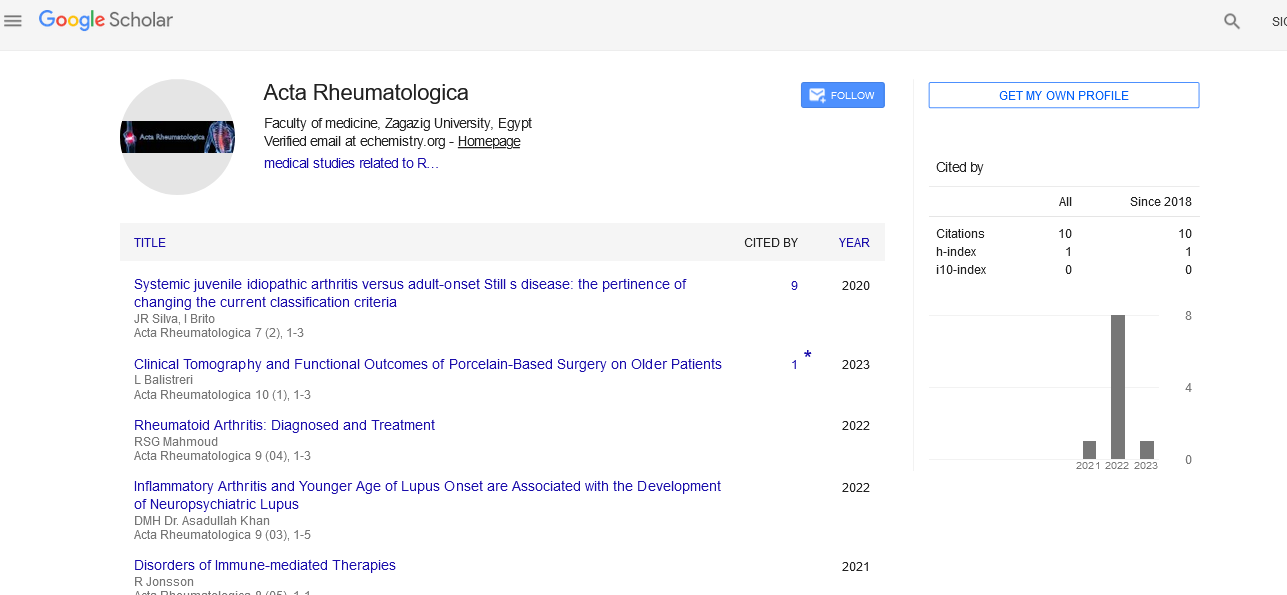Perspective - (2023) Volume 10, Issue 5
Glucosamine: Exploring Its Role in Joint Health, Benefits, and Controversies
Julian C. Knight*
Department of Orthopaedic Surgery, Queen Mary University London, United Kingdom
*Correspondence:
Julian C. Knight, Department of Orthopaedic Surgery, Queen Mary University London,
United Kingdom,
Email:
Received: 08-Sep-2023, Manuscript No. ipar-23-14253;
Editor assigned: 11-Sep-2023, Pre QC No. ipar-23-14253 (PQ);
Reviewed: 26-Sep-2023, QC No. ipar-23-14253;
Revised: 04-Oct-2023, Manuscript No. ipar-23-14253 (R);
Published:
12-Oct-2023
Introduction
In the realm of joint health, glucosamine has emerged as a
popular dietary supplement. Its reputation as a natural
remedy for joint pain and osteoarthritis has gained
widespread attention. However, its efficacy, safety, and
use have been subjects of debate among health
professionals and researchers. This article aims to explore
the role of glucosamine in joint health, its potential
benefits, controversies, and the current understanding of
its use.
Understanding glucosamine
Glucosamine is a natural compound found in the human
body, primarily in the fluid surrounding joints. It is a
building block for cartilage, the tough connective tissue
that cushions the joints. Glucosamine supplements,
typically derived from shellfish shells or produced
synthetically, are available in various forms such as
glucosamine sulfate, glucosamine hydrochloride, and N-acetyl
glucosamine.
The role of glucosamine in joint health
Glucosamine is believed to play a role in maintaining the
integrity and health of cartilage. It is thought to help in the
formation and repair of cartilage tissue and may have anti-inflammatory
properties. Osteoarthritis, a degenerative joint
disease characterized by the breakdown of cartilage, has been
the focal point for glucosamine's potential benefits.
Description
Benefits and effectiveness
Studies on the efficacy of glucosamine in managing
osteoarthritis have yielded mixed results. Some research
suggests that glucosamine supplements may alleviate joint
pain and stiffness, improve function, and slow down the
progression of osteoarthritis. However, other studies have
not found substantial evidence supporting its effectiveness.
Controversies surrounding glucosamine
The efficacy of glucosamine has been a subject of debate due to
conflicting study outcomes. Some studies have suggested that
glucosamine supplements might not offer more significant significant benefits than a placebo. Additionally, questions
have been raised about the quality and purity of
supplements, and the absence of standardized regulations
for glucosamine products.
Safety and side effects
Glucosamine is generally considered safe for most people.
However, it can potentially interact with certain
medications and may not be suitable for individuals with
shellfish allergies. Side effects might include mild
gastrointestinal symptoms, such as nausea, heartburn, and
diarrhea. Long-term safety, especially at high doses,
remains a topic for further investigation.
Dosage and forms of glucosamine
Glucosamine supplements come in various forms and
dosages. Typical doses range from 500 mg to 1500 mg
daily. It is available in oral tablet, capsule, or liquid form.
Understanding the appropriate dosage and choosing a
reliable brand should involve consultation with a healthcare
provider.
Other uses and future research
Aside from joint health, glucosamine has also been
explored for its potential in inflammatory bowel disease,
temporomandibular joint disorders, and spinal disc
degeneration. Further research is underway to clarify its
role in these conditions and to gain a deeper understanding
of its mechanisms of action.
Adverse effects and drug interactions
Glucosamine no matter what chondroitin raises the worldwide standardized proportion (INR) in people who
are taking the blood slenderer, warfarin. It might likewise
slow down the viability of chemotherapy for treating
disease symptoms. Unfavorable impacts are gentle and
rare and may incorporate stomach upset, clogging, loose
bowels, migraine, and rash. Since glucosamine is generally
gotten from the shells of shellfish, it could be dangerous
for those with shellfish allergy. Numerous makers of
glucosamine got from shellfish incorporate an admonition
that those with a fish sensitivity ought to counsel a
medical services proficient prior to taking the product.
On the other hand, non-shellfish-inferred types of
glucosamine are available. Another worry has been that
the additional glucosamine could add to diabetes by
disrupting the typical guideline of the hexosamine
biosynthesis pathway, however a few examinations found
no proof that this occurs. Different investigations led in
lean or hefty subjects reasoned that oral glucosamine at
standard portions doesn't influence insulin resistance.
Conclusion
Glucosamine remains a topic of interest in the field of
joint health. While some studies suggest potential benefits
in managing osteoarthritis, there is no conclusive evidence
to fully support its widespread use. The decision to use
glucosamine supplements should be made after consulting
with a healthcare professional, considering individual
health conditions and potential interactions. Ongoing
research and continued scientific inquiry into
glucosamine's efficacy and safety are essential in providing clearer guidance on its role in joint health.





